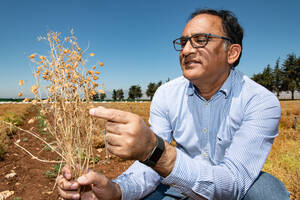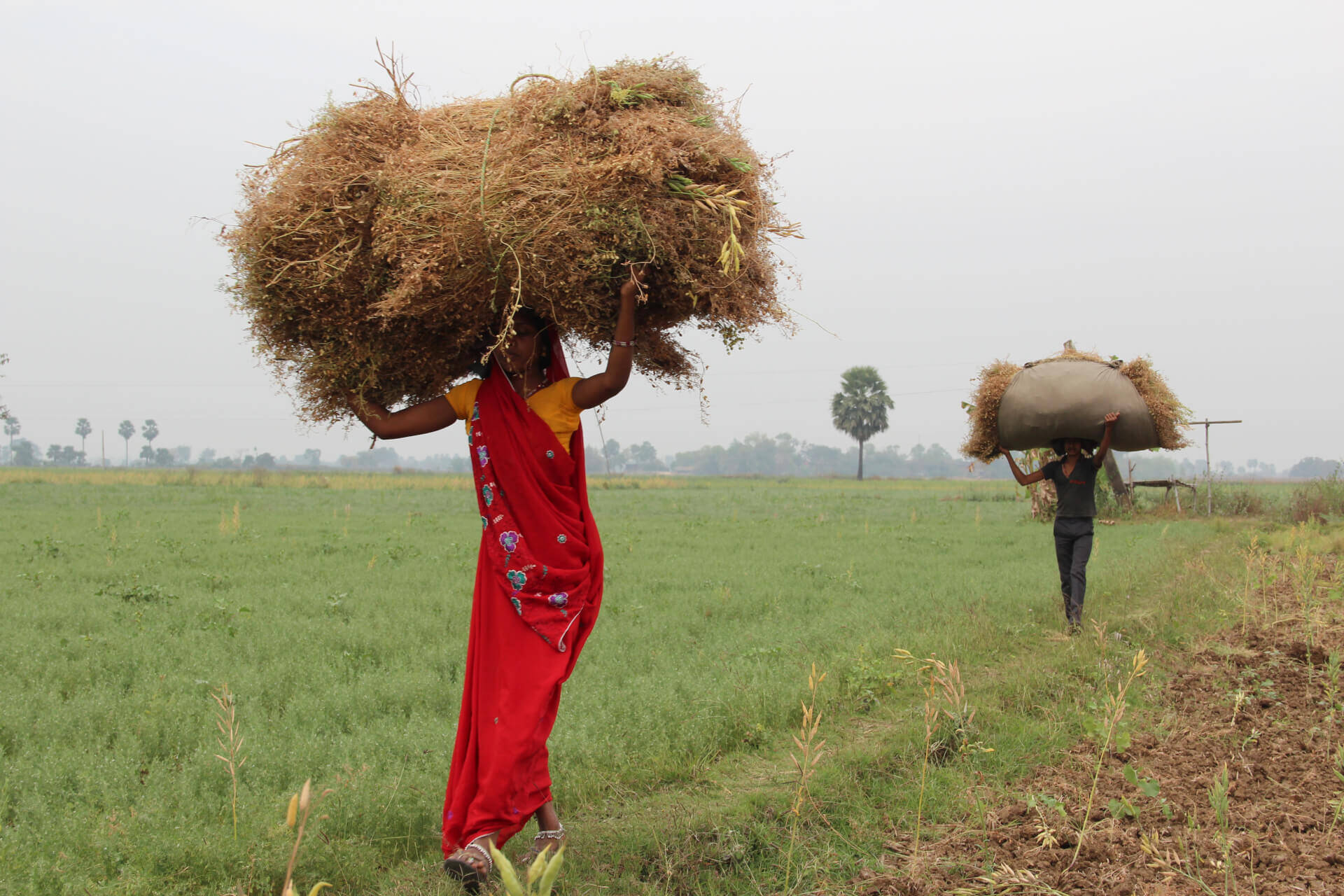Legumes: a superfood for people and soils

ICARDA is grateful to the Government of India (ICAR), IFAD, OFID, the Crop Trust, and CGIAR’s Research Program on Grain Legumes and Dryland Cereals (GLDC) for supporting our work on legumes.
---------------------------------
Every year in September, during ‘India Nutrition Week,’ nutritionists, health gurus, development professionals, chefs, and other food and nutrition experts converge across the subcontinent to discuss and promote the benefits of a balanced diet for a healthy lifestyle. While malnutrition rates have dropped significantly in India over the past decades, it has not been fully eradicated among the poorest.
Countless campaigns are organized in schools and in the media to promote healthy foods – especially fruits, vegetables, and pulses – to combat malnutrition and support optimal brain and body development.
In India, about a third of the population follows a plant-based diet. And while pulses have been a centerpiece of Indian traditional cuisine for millennia, per capita consumption of pulses must increase to boost people’s health and nutrition profiles.

- ICARDA: Over your career, you have developed over 50 varieties of improved lentils - and ICARDA has released nearly 200 improved varieties. What makes them stand out?
Dr. Shiv Agrawal: Our climate-smart lentil varieties thrive in the face of emerging pests and diseases and can withstand climate change impacts, particularly drought and heat. They also address evolving consumers’ preferences and reflect the priorities of our national partners and stakeholders. Our lentils are high-yielding and highly nutritious because we biofortified them at the breeding stage. They also mature faster than older varieties, so farmers can plant them in the short fallow window between two cereal crops and benefit from an additional crop for greater income and household nutrition.
- India’s long-term focus on more calories is shifting from rice and wheat to nutritious crops like legumes. But are legumes really making a comeback in India?
SA: While legumes have always been a central component of Indian diets, their importance diminished from the early 1960s onwards - with the start of the Green Revolution. With its cereal-centric approach and the deployment of modern production technologies for wheat, rice, and maize production, the Green Revolution boosted calorie intake and national food security. This also meant that legumes were no longer included in crop rotations, despite their nutritional value and benefits to soil health.
Government policies are now shifting from food security to nutritional security, and legumes are again in the limelight. Because legumes are rich in protein, micronutrients, and prebiotics and have many recognized health benefits, investments in legume research and development have increased in past years. Pulse production has expanded from 17 million tons in 2015 to 27 million tons this year – with an additional 4 million hectares of land under pulse cultivation. As a result, India’s reliance on costly legume imports has been significantly reduced, and the country has its eye on producing legumes for global export.
Nutrition week, organized since 1982 on an annual basis by the Ministry of Women and Child Development, has also been instrumental in increasing public awareness of nutrition and general health.

- How nutritious are legumes for soil and people?
SA: As legumes can efficiently capture atmospheric nitrogen and fix it into the soil, they are nature’s nitrogen fertilizer factory - to the great benefit of the following cereal crop. Pulses offer other indirect environmental benefits: they require fewer pesticides and chemical fertilizers and need less water than most crops. They even attract more pollinators, benefiting local crops.
Legumes aren’t just good for the planet but also excellent for people. Nutritionally, they are a superfood: they are rich in iron, zinc, and prebiotics and contain three times more protein than cereals. A diet made up of three-part cereal and one-part legumes meet most of the nutritional daily requirements of a healthy person, including protein. India’s daily per capita availability of pulses is about 41 grams and should reach 50 grams for optimal health results.
- Given the benefits of legumes, why do farmers still cultivate more cereals?
SA: Currently, policies such as subsidies on energy, fertilizer, and other inputs, as well as improved irrigation and chemicals for weed, pest, and disease control, still make cereal production more reliable than legumes, which are mostly rainfed - and as such, perceived as riskier by farmers. But farmers also know that legumes sell for twice, sometimes three times the price of cereals on the market and are aware of their extraordinary benefits to farms’ ecosystems. With a global changing focus on nutritional security, there is more research on the benefits of legumes, so this will only increase, as will government support through favorable policy.
- The demand for legumes in Europe is increasing, based on an appetite for healthier diets and more sustainable farming practices – but most are imported. Is ICARDA also developing Europe-friendly varieties?
SA: Europeans and their governments are aware of legumes' role in improving diets and reducing costs to health systems and the environment. People are incentivized to reduce red meat consumption and incorporate more pulses into their diets. Yet legumes barely cover two percent of all arable lands in Europe. Our European partners are boosting their legume research through free access to ICARDA’s international nurseries and genebanks to release suitable chickpea and lentil varieties for cooler climates.
